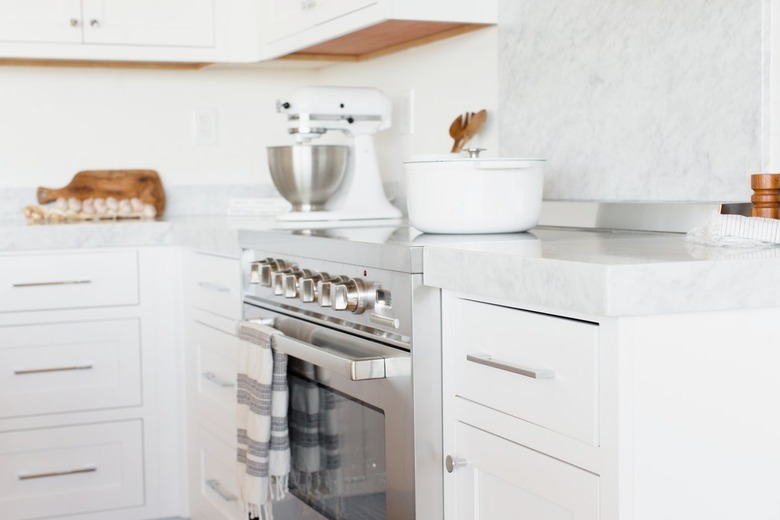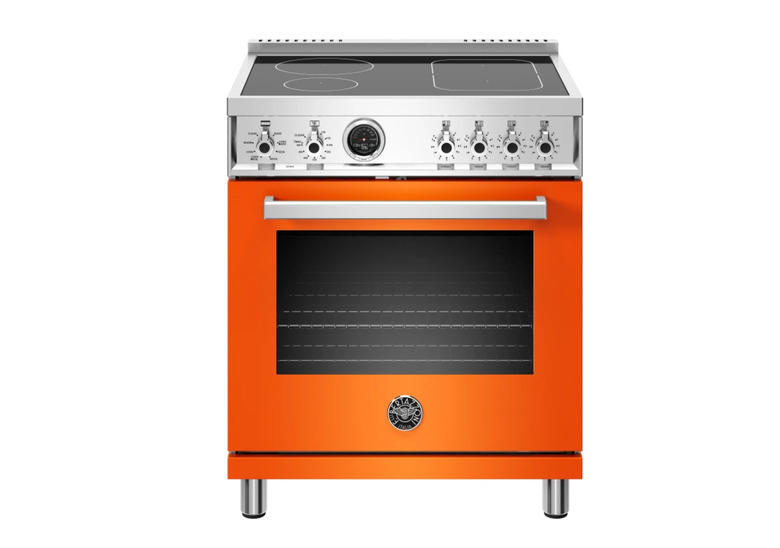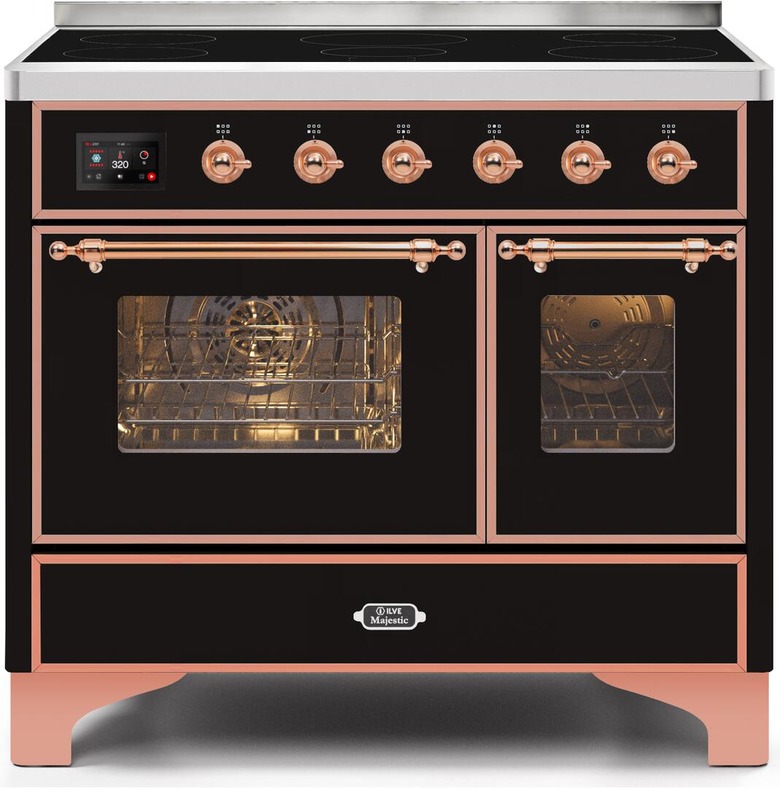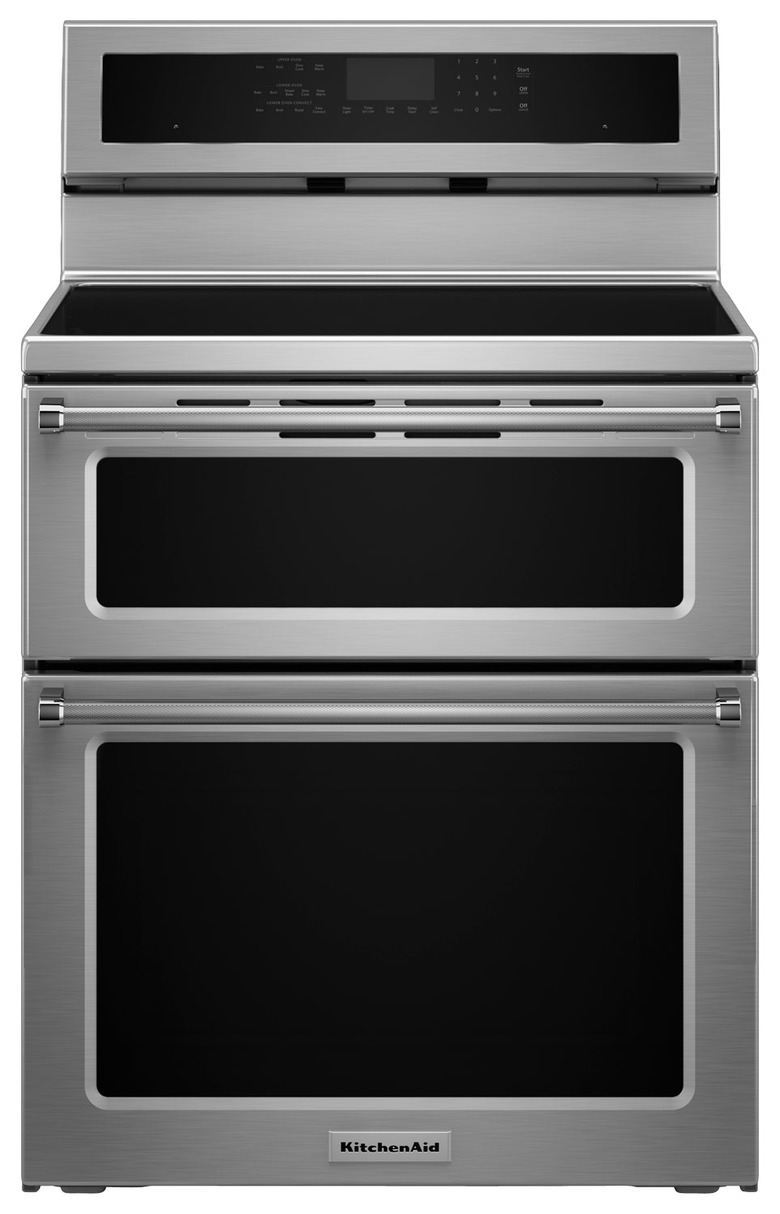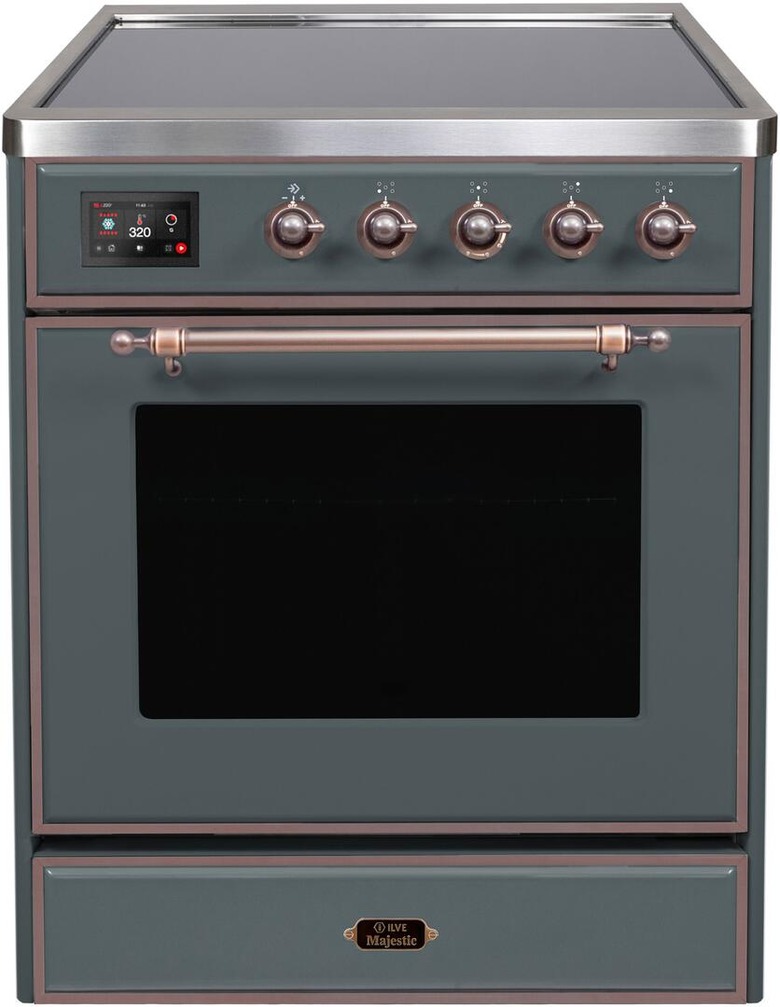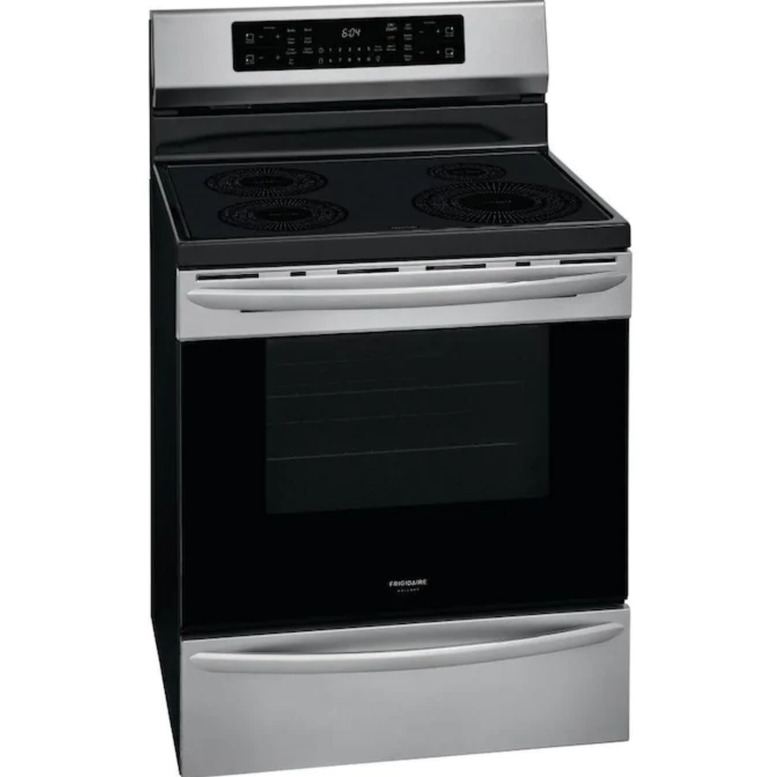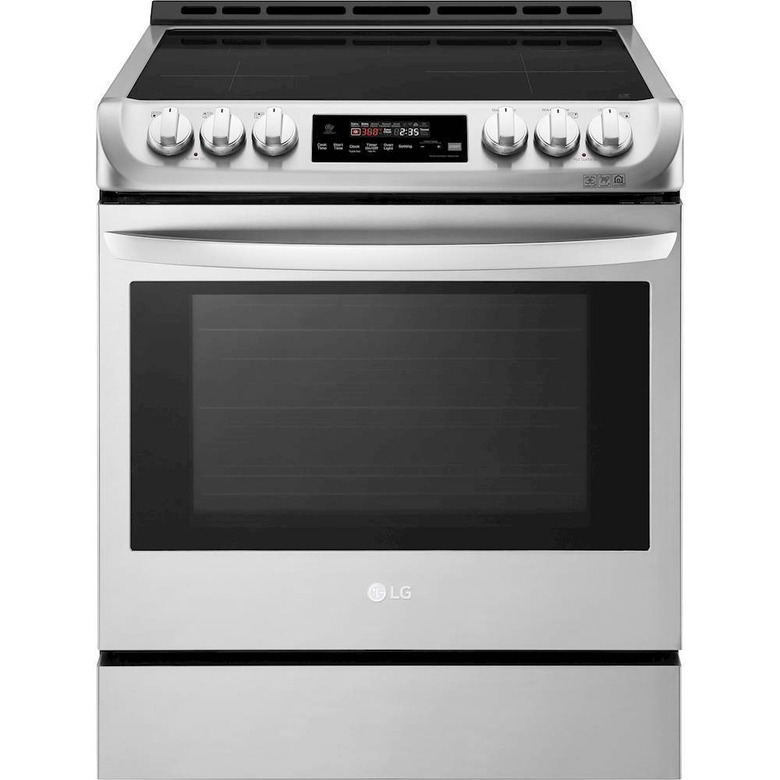An Induction Stove Is Worth The Splurge — Here's Why
If you're in the market for a new stove, you may need a crash course in all of the different types of cooktops that are on the market. As it turns out, there are a lot — probably more than you think.
Take, for example, an induction stove. According to Frigidaire, induction cooktops "heat pots and pans directly, instead of using an electric or gas-heated element." Additionally, an induction stove can boil water up to 50% faster than gas or electric and maintains a consistent temperature.
Intrigued? Well, it works by heating cookware with electrical induction, as opposed to thermal conduction provided by a flame or electrical heating element. An induction cooktop contains coils of copper wires beneath a ceramic plate, and an alternating current passes through your pots and pans.
In other words: It's pretty slick and convenient. Here are some things to consider as you ponder an induction stove purchase.
What are the pros and cons?
What are the pros and cons?
Consumer Reports says that induction cooktops are the fastest compared to other cooking technology options, which is a huge pro. Now you can whip up your fettuccini alfredo in the blink of an eye.
They're also very precise when it comes to temperature, allowing for more even, controlled cooking. Induction stovetops don't lose tons of heat either, which translates to a greener, more energy-efficient appliance. And without gas or flames, it's safer, too.
But if you're really into cookware, you might be disappointed to learn that you'd be fairly limited when it comes to an induction stove. You'll need to stick to induction-compatible options, such as stainless steel and cast iron pots and pans. And, if you're keeping a budget in mind for your kitchen overhaul, an induction stove might be out since they tend to be more expensive than their counterparts. Plus they can scratch very easily, so you'll need to show your stovetop a little extra TLC.
What is the difference between convection and induction?
What is the difference between convection and induction?
With a convection oven, the source of heat rises from the bottom, and the heat is circulated with fans, something that provides consistency. Meanwhile, an induction stove heats by magnetic induction rather than thermal induction from a flame or heating element.
When should you use induction?
When should you use induction?
If you crave meals in a hurry, an induction stove is likely ideal for you. Also, if you don't have a gas source in your kitchen, induction might be the perfect solution. Lastly, if safety is top of mind, you really can't go wrong with this type of stove.
Ready to start shopping? Here are a few options worth considering.
1. Bertazzoni Professional Series 30-inch Wide 4.6 cu. ft. Freestanding Induction Range, $4,986
Available in an array of colors (we're partial to orange!), this stylish induction stove is freestanding, offers multiple burner sizes, and plenty of room to cook both big and small dishes.
2. Ilve Majestic II Series 40-inch Freestanding Electric Induction Range, $11,375
For an induction stove with a big dose of style, look no further than this beauty, showcasing slick black and rose-gold hues. It also has lots of bells and whistles, from the double oven to the self-cleaning mode to the warming drawer.
If you're in the market for a straightforward, no-frills induction stove, we recommend this one from KitchenAid. It has a double oven (which is so convenient if you entertain often), lots of oven racks, and a self-cleaning mode.
4. Ilve Majestic II Series 30-inch Freestanding Electric Induction Range, $8,123.75
If your kitchen is short on space, this induction stove is on the smaller side, but still packs a chic punch with its bronze trim and smooth cooktop.
Are you searching for an induction stove that can keep up with your family? This Frigidaire model fits the bill, featuring fingerprint-resistant, smudge-proof stainless steel and an air fry function that'll make your meals even healthier.
This induction stove is literally a smart buy. It comes with LG SmartThinQ® Technology, so you can control your cooking from your phone and receive notifications, too.
